
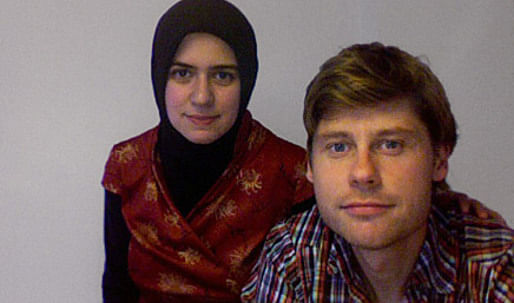
Selva Gürdoğan, Architect (born 1979, Turkey. 2003 graduate from Sci-Arc, USA) and Gregers Tang Thomsen, Architect (born 1974, Denmark. 2003 graduate from Aarhus School of Architecture, Denmark) founded Superpool in Istanbul in 2006. They met at Rem Koolhaas’ studio Office for Metropolitan Architecture - OMA - in 2003, where they worked until establishing Superpool.
Currently Superpool is investigating Istanbul. This involves initiating international workshops, conducting a number of research projects of which “Mapping Istanbul” commissioned by Garanti Gallery is the most extensive mapping of Istanbul done to date. Already exhibited at DAM, Frankfurt and XXL Europe, Lille, the project is a tool that is helps the inhabitants understanding the vastness of their city. At building scale, Superpool is underway with the construction of Dragos Towers, two residential highrises in Kartal, Istanbul.
Orhan Ayyüce- How did you meet and start your company?
Selva Gürdoğan- Gregers and I met while working at OMA in Rotterdam in 2002. We have been colleagues since then. We moved to OMA New York office in 2004 with the Charles and Dee Wyly Theatre project. In 2006 we decided to move together to Istanbul and start up SUPERPOOL.
OA- What's SUPERPOOL, and how does it operate?
SG- Superpool is an architecture studio, but we like to keep the work varied from residential towers to kilim patterns to designing furniture. We like to run the office like a studio. Both in our formal education and at OMA, there was a very strong studio culture. We know architecture is not something you can do by yourself in an isolated room, it is better and more rewarding to work within a group. In the office everyone is expected to contribute with his or her intelligence and imagination. And out of the many ideas brought to the table, we create a narrative for the project.
OA- What makes OMA such an incubator for great designers who continue to develop very relevant ideas and architecture upon 'graduation from OMA?' I know they get to cherry pick the talent out there, but they must have a great eye to see the treasure. Can you go back and describe this 'OMA School' a little?
SG- I think the best thing OMA teaches is to develop many options for each design problem. Every time a new project comes to the office, a team of 3-5 people start making design proposals at least for a couple weeks. So with every new design question there can be at least 20-30 ways to answer. Then together with Rem through multiple discussions a concept gets chosen / developed. So the process is very transparent and very much dependent on the team. And since there are many ideas on the table, one does not feel intimidated to put a crazy / stupid / ugly idea on the table as well. The pressure is off once you stop worrying about designing the building in one go. This is what the office does really well. Make people compete to produce more and better ideas. It is a great school.
OA- I think Rem is ultimately a nomad. His work is like it is in a memory stick he can take it to anywhere and set it up. He built an enormous infrastructure for his practice and with post OMA practitioners like yourselves. It is even more interesting that you then go on and collaborate with other colleagues. Superpool network, we get it...
Why did you chose Istanbul?
SG- When we decided to move out of the US, we had two options, either to go to Denmark where Gregers is from or move to Istanbul. We thought Istanbul would be a more interesting start since there is less of an architectural agenda in Istanbul and more buildings being built. Maybe we felt we could be more useful as well.
Also a lot of our energy is spent on research / analysis projects for Istanbul. The Dolmus and Minibus map of Istanbul was the first step, it was a self initiated project. When Gregers and I first moved to Istanbul, he wanted to look at maps to understand the city; there was not a transportation map available to help him move around. With this need we decided to make maps. Though the data for all the Dolmus and Minibus maps exists, it is not publicly accessible. Even if it were accessible, it is not legible. We gathered all our data by taking the individual minibuses and charting their routes. This was simply easier than getting permissions for access to the official map. This lead us to more serious mapping projects; we have started a very ambitious project with Garanti Galeri called "Mapping Istanbul" as a part of their exhibition “Becoming Istanbul.” After being exhibited in Frankfurt, Berlin, Lille and Bahrein now the "Mapping Istanbul" is being prepared as a book. Hopefully will be ready by November 2009.
↑ Click image to enlarge
Dolmuş & Minibüs Map of Istanbul
↑ Click image to enlarge
Dolmuş & Minibüs Map of Istanbul
↑ Click image to enlarge
Dolmuş & Minibüs Map of Istanbul
OA- For Gregers, I know it is only 3 hours flight from Copenhagen, but how did you adapt the life in Istanbul which is very different than Denmark (or is it) for an architect?
Gregers Tang Thomsen- I usually find it difficult to answer when asked what the differences/pluses and minuses is between Denmark and Turkey. Partly because it feels like I'm asked to pass a judgment of who is better, which i am not particular interested in making. All places I have lived has each their charms as well as backsides. If I were to look at Istanbul, or any other place in the world for that matter, with the stereotypical Danish middle class eyes many places would look pretty grim; in DK work hours is 35 hours per week, you have 6 weeks of paid holiday, education is free, healthcare is free, crime is low, unemployment is low, supposedly Danes are the most happy in the world... The welfare state is kicking ass... Anyhow, I like differences. Local differences of the cities I have lived in Denmark, differences in Europe, and the remaining parts of the Western world, I so far have been through...
In Turkey the main thing that strikes me being different from my very orderly and well managed upbringing in DK, is the level of instantaneous occurrences in daily life. For instances; the arrangement of a doctor's appointments or execution of a print job or to finding a water tap missing for your renovation project can happen with the blink of an eye and you will find yourself at the doctor, have the prints and the water tap in your hand within minutes. In DK these are all scheduled things that can only happen in a certain order, be arranged according to each of their respective underlying rigid structures...
OA- I like your answer. That is well said characteristically.
Furthermore, the concept of speed/time is very organic in Turkish way of life.
It's used a lot in modern day living. Once they have the trust based infrastructure and cheaper labor, things move much faster or slower, based on the event, it is face to face, eliminating confirmation after confirmation. Turks will never relinquish the human contact. In the West, this process seems much more mechanical. It has implications on control of the production as a perfection. Product is well made, sometimes unnecessarily, it is very slow, costly. This is a prevalent economy too. Perfection=expensive, inorganic, detached. Imperfection=affordable, organic, attached. I sometimes think the West misunderstood luxury and start to make everything too beautiful and straight.
Back to mapping Istanbul. With its hills and waterways, the city does not have a ubiquitous Western grid and often streets change names after certain landmarks etc. You have additional systems of identification such as buildings, fountains, mosques, shops etc., which are used as place identifiers. How do you develop a system to incorporate all that into your map? I well know it is not simply transporting from Goggle Earth and layering street names on them but also layering onto maps, information about how the society moves, builds, talks to each other, separates from one another etc...? Any of this information can lead to labyrinths in Istanbul.
What challenges you ran into mapping Istanbul?
SG- For the mapping, we had to address this way-finding problem in the Dolmus and Minibus map. We were seriously annoyed at the beginning with not being able to find our way in the city and getting more lost after asking directions. I am really bad in orienting myself and to translate vague directions to English for Gregers to find our way was and still is a nightmare. So, dolmus and minibus map has only the neighborhood and the street names, for promoting their use. Because naming is also a problem, sometimes there is a lack of consensus on what to call a street, is it 'minubus cadde' or 'Semsettin Gunaltay Caddesi?'
But now we are working on a map for Diyarbakir locating all the NGO's that work on woman's issues. We are interested in developing map graphics that do not rely on text for legibility... So we will be using references to landmarks for way finding for battered women...
OA- Diyarbakir is a very important city in eastern Turkey with its mostly Kurdish population and Tigris Valley. It is the only city in Turkey completely surrounded by ancient walls. There were some beautiful courtyard houses in the neighborhoods within those walls. It is like a maze in there. We lived there for few years when I started elementary school. One of my early childhood images of architecture is that old city.
I am so glad you guys are doing this work there. Diyarbakir and the entire Eastern Turkey was neglected for decades by the government.
As architects expanding into areas of work other than just buildings and into the very delicate social issues that I know of and expanding into interesting collaborations which might supply you with very interesting architectural projects as well.
Everybody talks about this and fortunately it is a growing movement in architecture.
Who supplies the funding for this project? It must be very meaningful from the woman's point of view.
SG- It must have been a great childhood spent in Diyarbakir. Though some of the courtyard houses seemed gone, the Dicle (Tigris) Valley still looked magical. The work we are doing is being prepared for the Rotterdam Architectural Biennial, and we hope that the NGO's in Diyarbakir will actually use the map for their self-promotion and strategy planning. It will be prepared in Turkish, Kurdish and English.
The theme for the Biennial for the Middle East and Turkey is refuge, in the broad sense of the word, from cruise ships to German holiday villages in Antalya to actual war refuge. The story is interesting in Diyarbakir, young women's suicides in the 90's in the area alerted NGO's. They opened an office offering counsel, no one came. Afterward they got smarter and started free laundromats using the laundry as a decoy to give women a reason to come. Soon the laundromats became popular and a place for counsel, for teaching etc. Now the municipality supports this program, and there are 5 or 6 laundromats in Diyarbakir along with many other women's NGO's.
We are trying to balance the mapping with other things, our other most interesting project is called Tailorcrete, it is a EU funded research project on incorporating robot technology into concrete industry which is still fairly manual compared to the other industries. It will be a 4 year project starting in October and will be led by the Danish Technology Institute with 8 other partners.
GTT- We are looking very much forward to this project Tailorcrete , the ambitions are high, but it is still to be seen what really can be done as we are only now starting. As EU consumes around 200 million m3 of concrete yearly, roughly 50% of all materials, energy, and labor used in the construction industry, changes in this sector can have massive impact. The goal of the current proposal is to introduce a radically new technology for casting concrete using robotics, which replaces the use of traditional form-work and thus enables greater flexibility in producing singular concrete structures with different geometric designs. TailorCrete will initiate a transition from the rectangular monotony of today’s industrialized mass concrete construction that dominates the European landscape, to new industrialized production of unique concrete structures without the need for expensive and labor intensive manual construction processes based on traditional craftsmanship. This has of course been the dream of the many more digital oriented offices of the architecture industry for many years, we will see if the dream can come true... The list of participants however makes it look promising that breakthrough can be achieved as it contains top notch partners in all fields.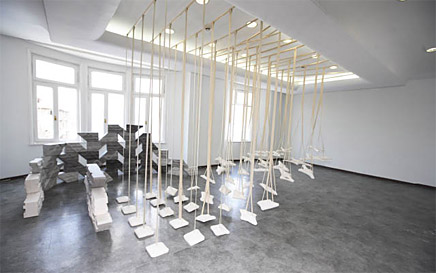
↑ Click image to enlarge
Woodbury University Design Studio (Photo: Emre Dörter)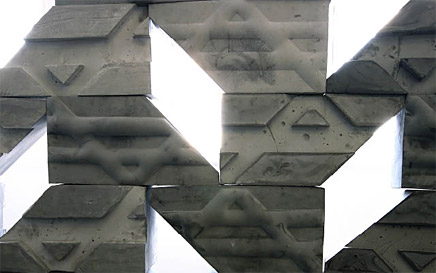
↑ Click image to enlarge
Woodbury University Design Studio (Photo: Emre Dörter)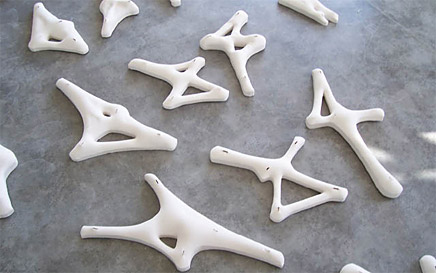
↑ Click image to enlarge
Woodbury University Design Studio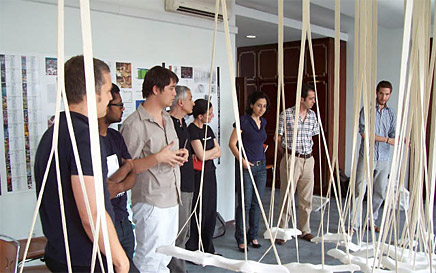
↑ Click image to enlarge
Woodbury University Design Studio
OA- You also have teaching positions. Can you talk about that a little? Turkey is increasingly becoming a venue for Western students to go and study architecture and urban design. What are they looking at and studying?
SG- Our teaching efforts are sporadic, we were invited to co-teach an Istanbul summer studio for Woodbury University. We like to produce things in the studio, so we worked with fabric castings. It was a small group. Later we led a workshop in Denmark at KARCH. As you said there is a lot of European students in Istanbul nowadays, a lot of the European Universities are doing study trips and the Erasmus program also seems attractive. We have hired many Erasmus students now who usually stay after their studies to work for a couple months. I guess with the European Union expanding,
Istanbul becomes the closest 'international' city...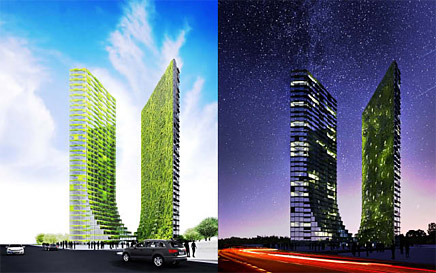
↑ Click image to enlarge
Dragos Towers (Visualization: Hońca)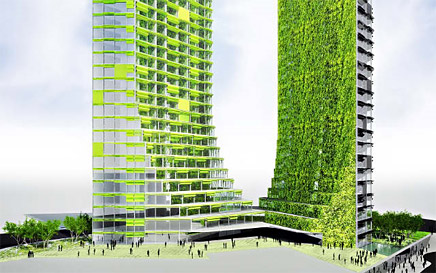
↑ Click image to enlarge
Dragos Towers (Visualization: Hońca)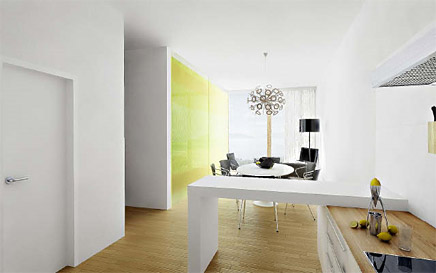
↑ Click image to enlarge
Dragos Towers (Visualization: Hońca)
OA- Gregers, what did you do today?
GTT- I have been preoccupied with keeping up with the ustas (builders) on the site for the Sales Office currently under construction for our Dragos Towers project . It is like trying to "keep track of a bag full of lice" as we say in Denmark.
OA- I didn't realized Dragos Towers were under construction. Sizable project by young firm standarts. That is what I like about Turkey, you can do big projects early in your career.
GTT- Yes, on its way it is. Still in permit process for the actual building; the sales office is however a big step in the right direction.
OA- Looks like there is going to be a green plant screen on the towers? Can you talk about them a little? I am more interested in your take on the green. Is it real and is it good to have that with maintenance issues and all? Usually it ends up being a propaganda/sales detail, remaining real only on the renderings.
GTT- Before we really dug into the project we had an intention of increasing the neighborhoods present sparsely amount of public green area with the project as a tool. Later we understood this was not really going to happen due to the developers inclination for salable square meters over philanthropic ideas about better public space; the vegetated facade became our answer to the first intention.
Interestingly enough it looks like it can be a cheapish solution as we define the plants as the finish of the facade, therefor we can leave this one face of the building fairly roughly finished and let the plants take care of the rest... As we move along we can report on the final solution.
Our team is researching the right application technique. There are big challenges once you get up in the +100 (or for that matter +50) meters, mainly due to the winds in these heights.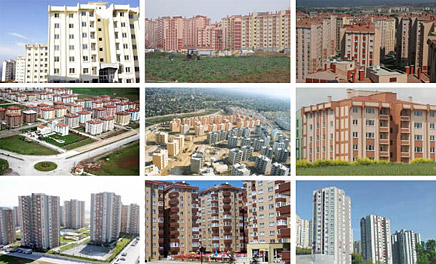
↑ Click image to enlarge
Konya Residence
OA- Another project; I think your apartment proposal in the city of Konya can have great implications if built as a prototype. Not only in Turkey but all the way to China, Russia and the rest. It just is a better grouping. It even looks better resistant to earthquakes and makes it necessary to develop community areas because it a centripetal as well as centrifugal in plan providing views. Never mind being environmentally much less taxing.
Can you talk about that project a little?
GTT- Our main criticism of the Turkish building industry is the lack defined green space provided around a given building. For us the wired part is that - it seams so - people (owners, renters) doesn't care anyways. A good friend of ours, Vasif Kortun , helped us one day with a phrase though said in a different context: "the public doesn't know what the public needs before it is there." This phrase applies in many instances in many degrees of interpretations.... Like there is no legible bus map over the 500 bus lines of Istanbul - hhhuuu?!...
OA- I think public knows fundamentally that they want welfare and happiness. But they think they can't get it. Turkey is an interesting country for doing the 'first' of anything, because there are somethings still not done yet. But this is narrowing down fast. Anyway, looking at a particular picture (cover), you guys look like people's architects.
↑ Click image to enlarge
Konya Residence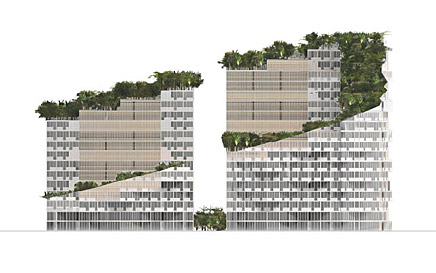
↑ Click image to enlarge
Konya Residence (Visualization: Hońca)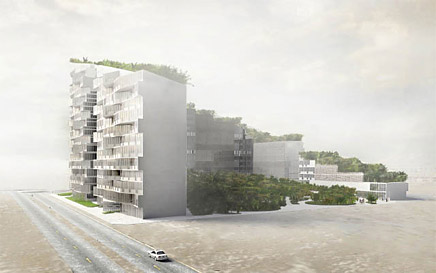
↑ Click image to enlarge
Konya Residence (Visualization: Hońca)
SG- We take it as a compliment, wolves in sheepskin. (laughs)
OA- Selva, you went to Sci-Arc, what were your impressions of Los Angeles on a personal level, how did you feel in LA?
SG- In the beginning I hated it, I was driving and driving to find "the city," and would get discouraged. LA is the first city I moved to as an adult after spending 14 years in Istanbul (before we lived in Jeddah in Saudi Arabia for sometime where my dad was teaching) and I was looking for some density I was used to. But when I got to know it better, I learned to appreciate it deeply. Now I would prefer it over for New York for sure. I think I like the people the most, there is a wider range of normal and also of the original, like the beach-bums (laughs) . Life has more meanings in LA. And of course I loved the ocean and the mountains... I would go back and live there if it was not so far away from everything else!
OA- Like many students who studied here, do you have a quintessential 'Los Angeles' project?
SG- Of course I have some freeway projects... This is from my first semester at SCI-Arc with Russell Thomsen. SCI-Arc was heaven after ITU (Istanbul Technic University) where in the 90's they did not teach any methodology. Variations of modern esthetics and especially strange post-modern tendencies ruled the scene at ITU. So to be in the studio of Russell Thomsen was such a relief. Later my favorite instructor was Perry Kulper, pity he is not at the school anymore. Anyhow, I guess we can talk about SCI-Arc to no end...
OA- Not me! (smiles)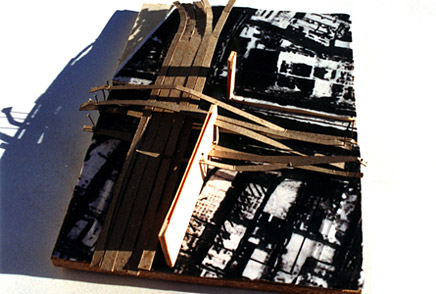
↑ Click image to enlarge
Sci-Arc Student Project by Selva Gürdoğan
OA- If you were given one project here in Los Angeles today, what would it be?
SG- What I would like to build in LA today would be a house in the hills. So no urban heroism, not today... Plenty of urban heroism in Istanbul (laughs.)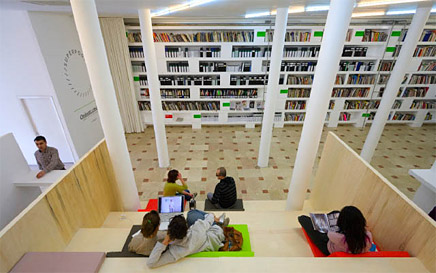
↑ Click image to enlarge
Open Library (Photo: Iwan Baan)
↑ Click image to enlarge
Open Library (Photo: Iwan Baan)
↑ Click image to enlarge
Open Library (Photo: Iwan Baan)
OA- Do you have a small personal project in Istanbul? Like.., do you have a dream house or something?
SG- Our small personal project, which we talked about but have not put into action is 10 things we would erase from Istanbul. One obvious one is the gas station in front of the Sirkeci Train Station. Our other pet project is turning the Park Hotel into Central Library of Istanbul. So as I said much urban heroism here.
OA- In the light of recent economic situation in the world, 'they' say, there are some changes will take a place about how architecture is done and what priorities we will have as architects. What do you think? Where Superpool wants to be?
SG- Your question is difficult. I guess the best case scenario will be if economically, small becomes more powerful again and architecturally if some soberness gets back into design and real estate ambitions. If what we previously identified as the "oriental" style smaller but more flexible business relationships prove to be more resilient through the course of the economic downturn, this can be a valuable alternative rediscovered.
As to Superpool, young architecture firms have to be creative with business plans anyway, regardless of good or bad times. We keep on trying to be creative with collaborations, intellectual investments etc. Maybe this downturn will prevent us from ever becoming immobile. This would suit us well, since we would like to be partly in Turkey and partly in Denmark.
In terms of the possibility of architectural soberness becoming fashionable, this is extremely exciting. Somehow we are a generation swept off our feet with crazy possibilities from economic boom, technological advancement, softwares etc. It would be great to be grounded again. In that sense it is great that ecological concerns have become profitable. It is nice to think about the effects of the wind, and passive ventilation systems etc. Architecture is a strange end result of economy. The architect is in someways a middleman. It is nice to think the environment can be the boss for a while.
OA- I am helping a client who lives in Switzerland to build a small retirement home near Canakkale (Turkey). Nice diversion for me also. Being an Angelino for over thirty years, we are mostly 'house' architects here. I think L.A has the best modern houses in the world.
Let me know if you guys come to LA, I'll take you some of my collection of constellation sites and new architecture.
SG- I agree that LA has the best collection of houses in the world, we will take up your offer when we are there next. And if you ever need a local for your Canakkale project, we are here.
OA- Deal! You never know..
Creative Commons License
This work is licensed under a Creative Commons License .
/Creative Commons License
A long-time contributor to Archinect as a senior editor and writing about architecture, urbanism, people, politics, arts, and culture. The featured articles, interviews, news posts, activism, and provocations are published here and on other websites and media. A licensed architect in ...
6 Comments
Amen!!!
this office is so refreshing for architecture!
upstarts is getting "developed" - Orhan as usual a brilliantly conducted interview
Excellent interview, Superpool and Orhan. Cool to see such an unpretentious and practical international outlook.
Thanks for all the comments here, in private and in facebook. I really feel Superpool is the microcosm of the new and inventive practices will be seeing more of and that eventually will host the change in profession everybody talks about. Young firms doing it all.
Superpool well illustrates the shape of young practices these days. This is a great introduction of an inspiring profile. I now follow Superpool.
We love the interview Orhan. Your interviews are fun to read because you make yourself interesting too. A lot of interviewers don't have that kind of resonance, it is very creative. Thanks for sending it.
I thought about your East-West perspective too. That is well above the provocative! More historians need to look at it that way. Historians? Are there any!!?? The other night we needed one. But, the hour was saved by you know who, once more.
Block this user
Are you sure you want to block this user and hide all related comments throughout the site?
Archinect
This is your first comment on Archinect. Your comment will be visible once approved.